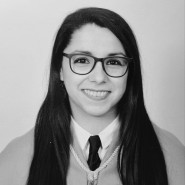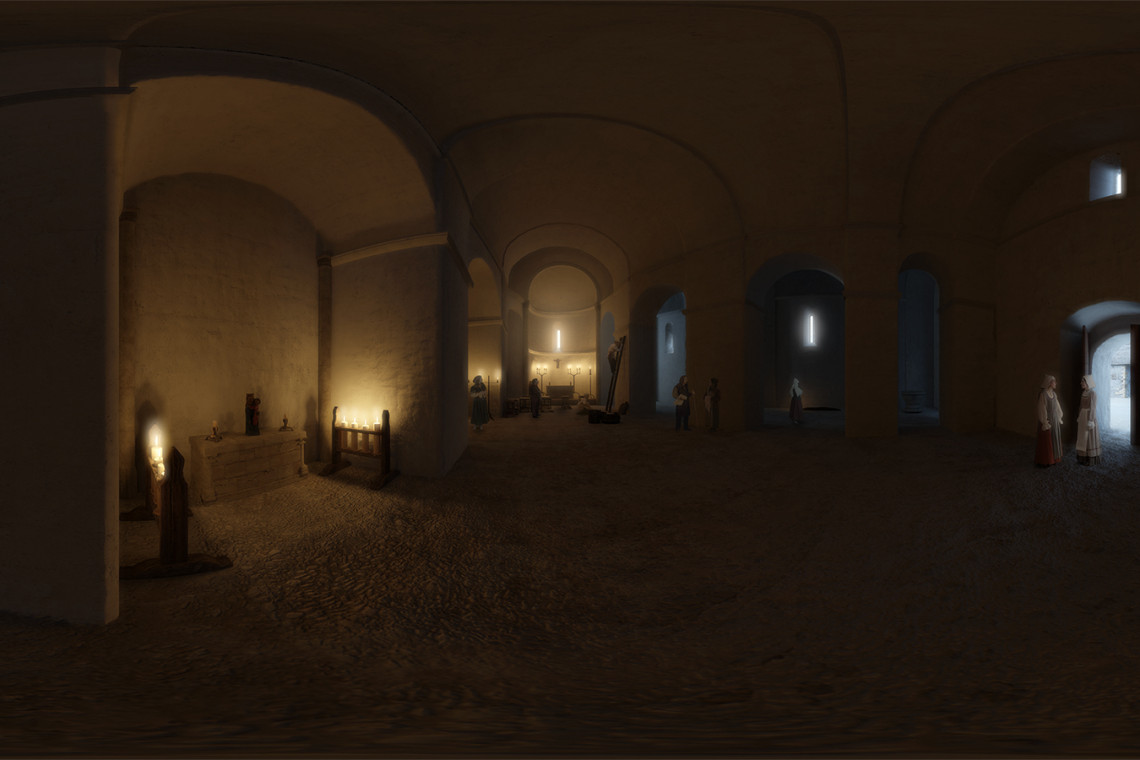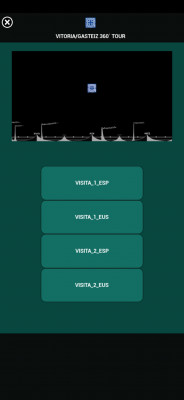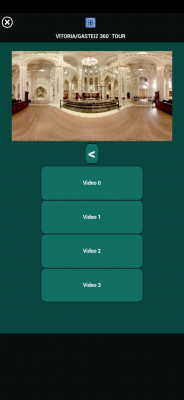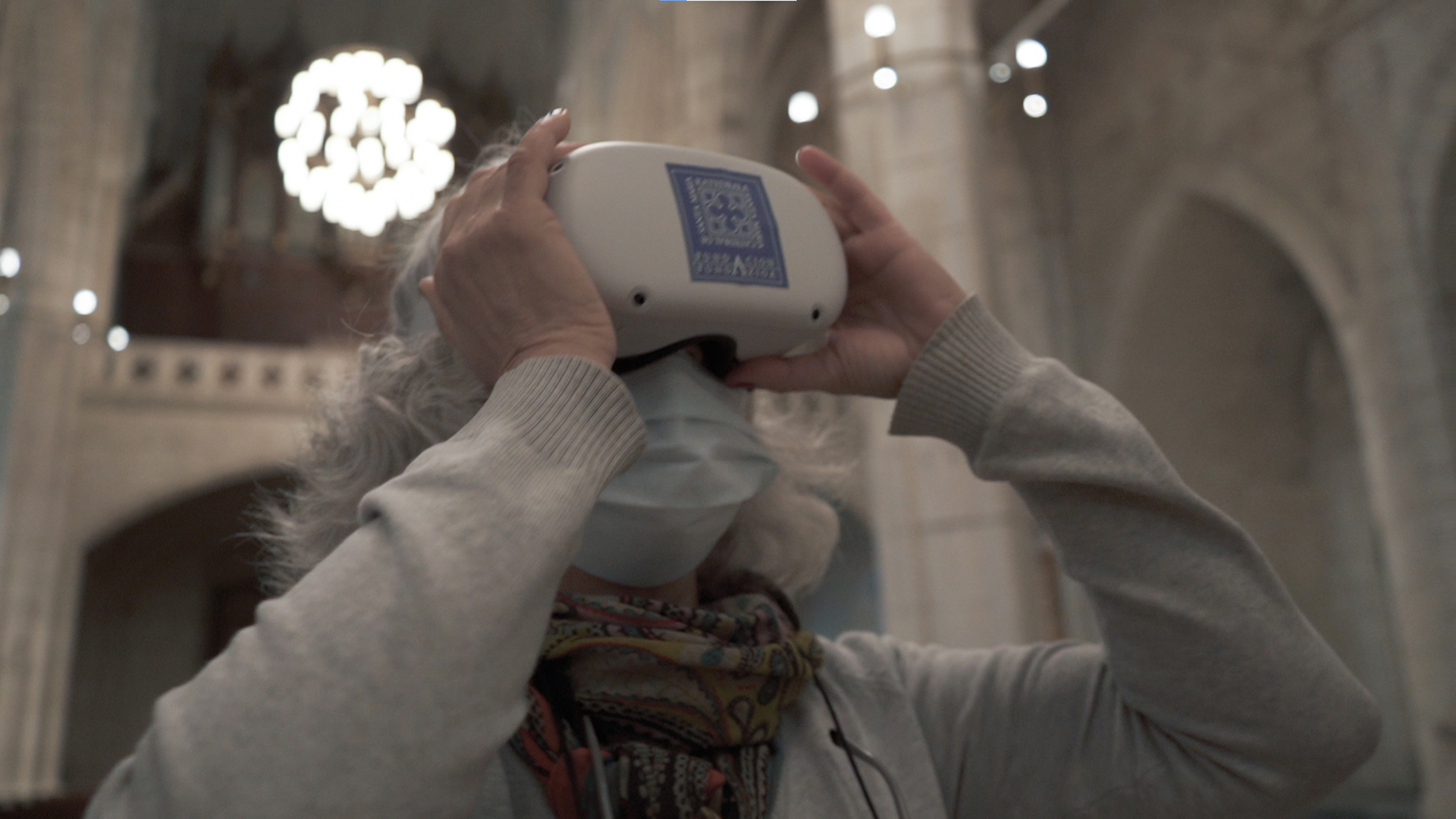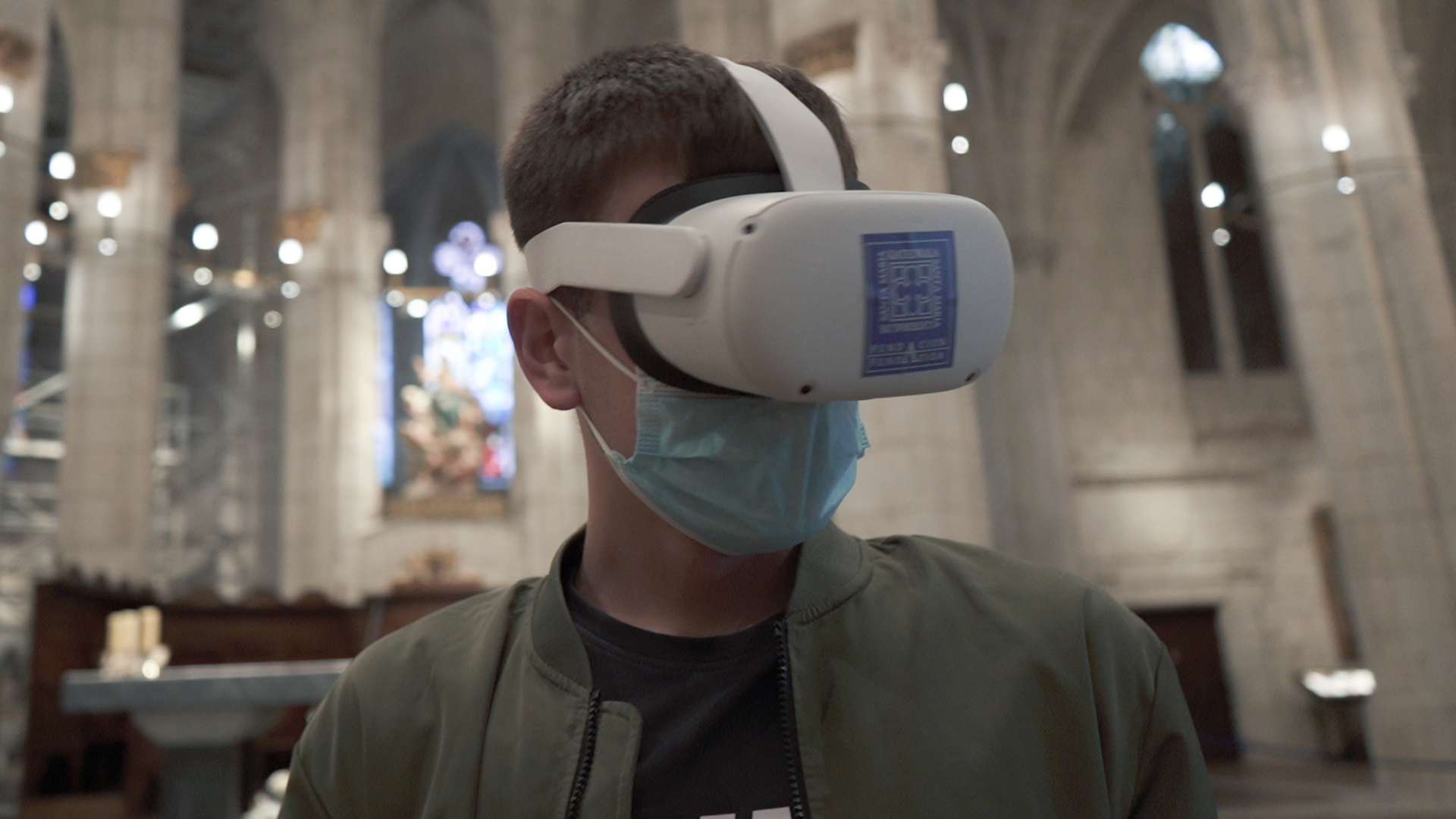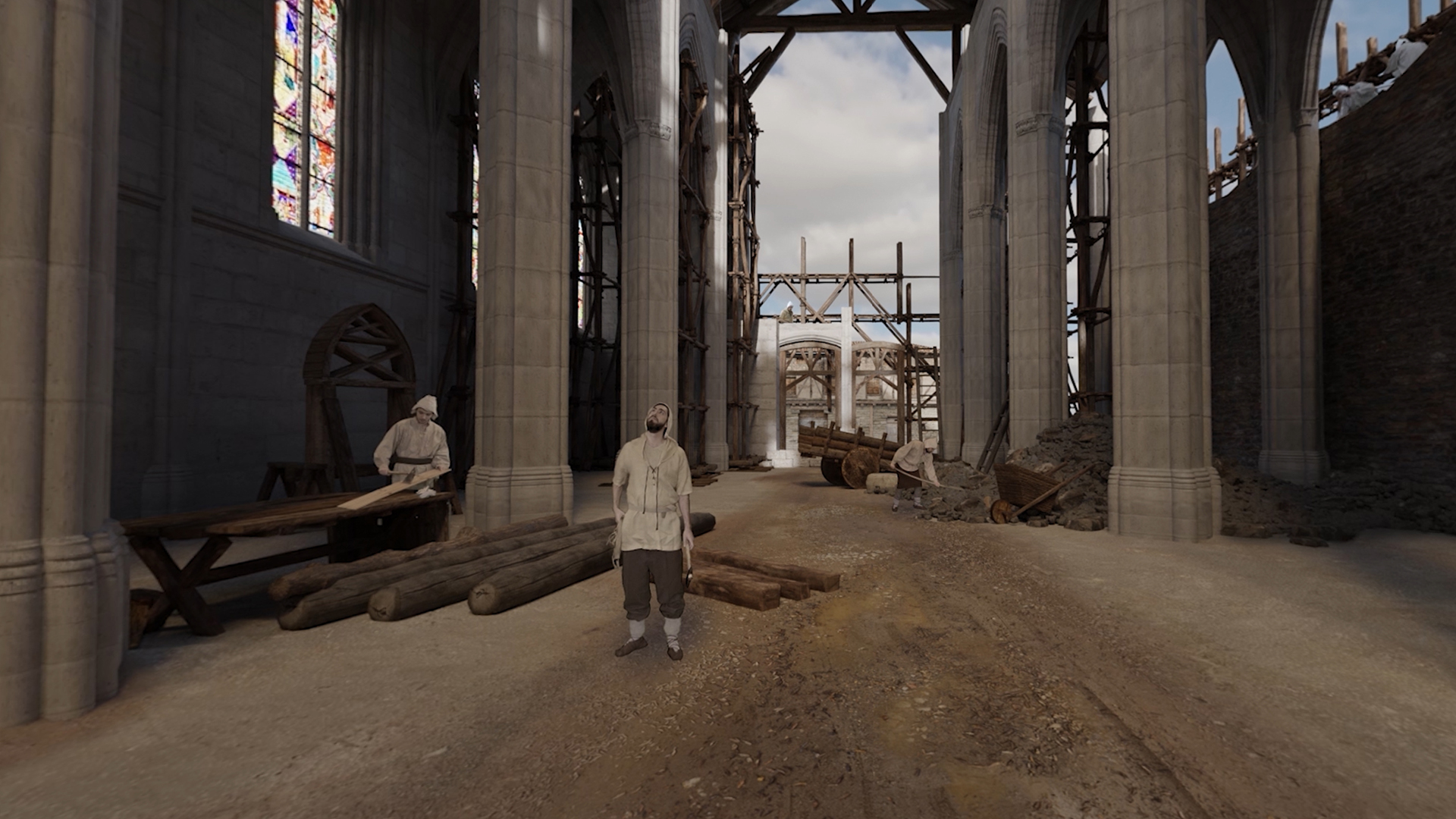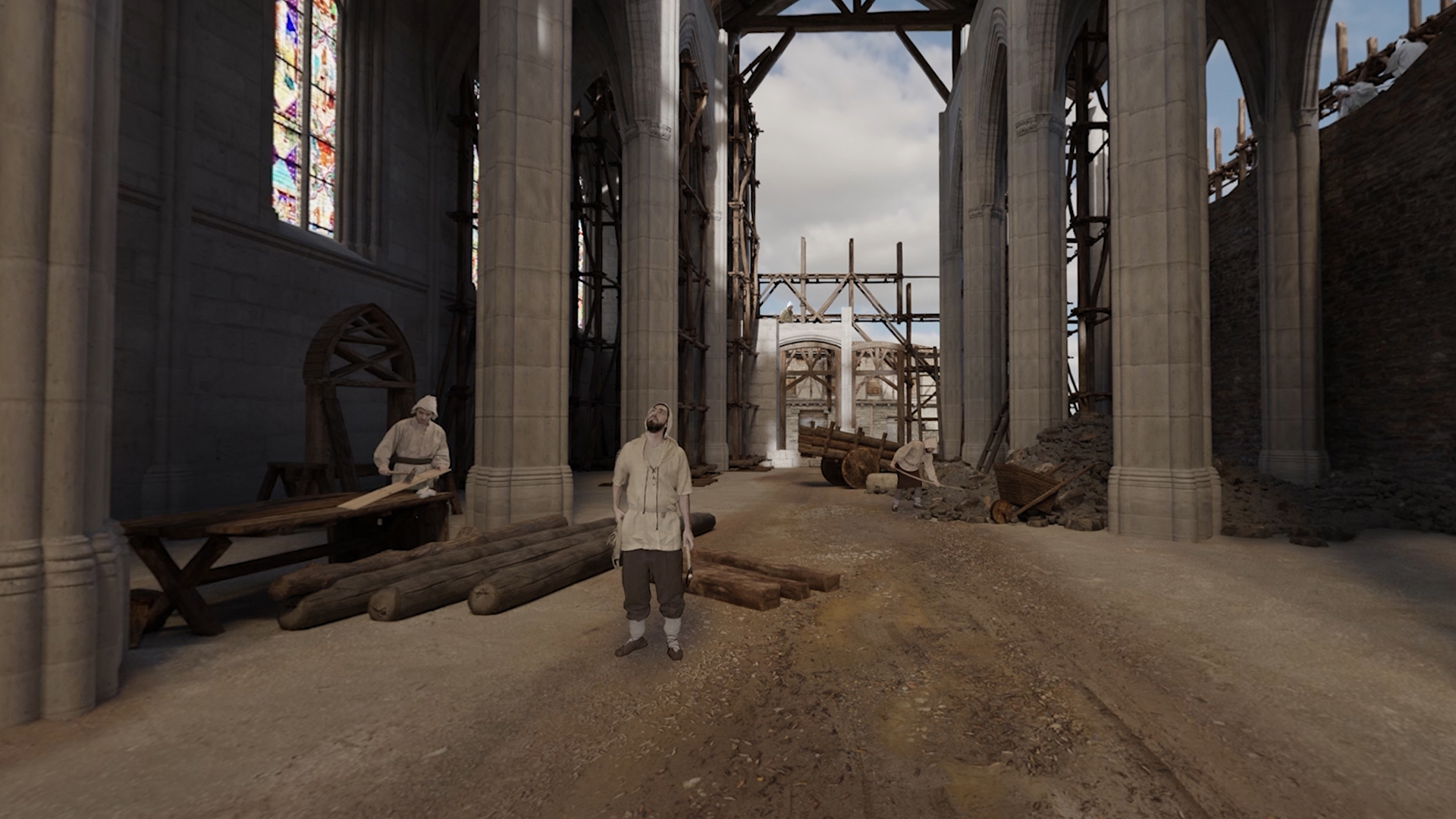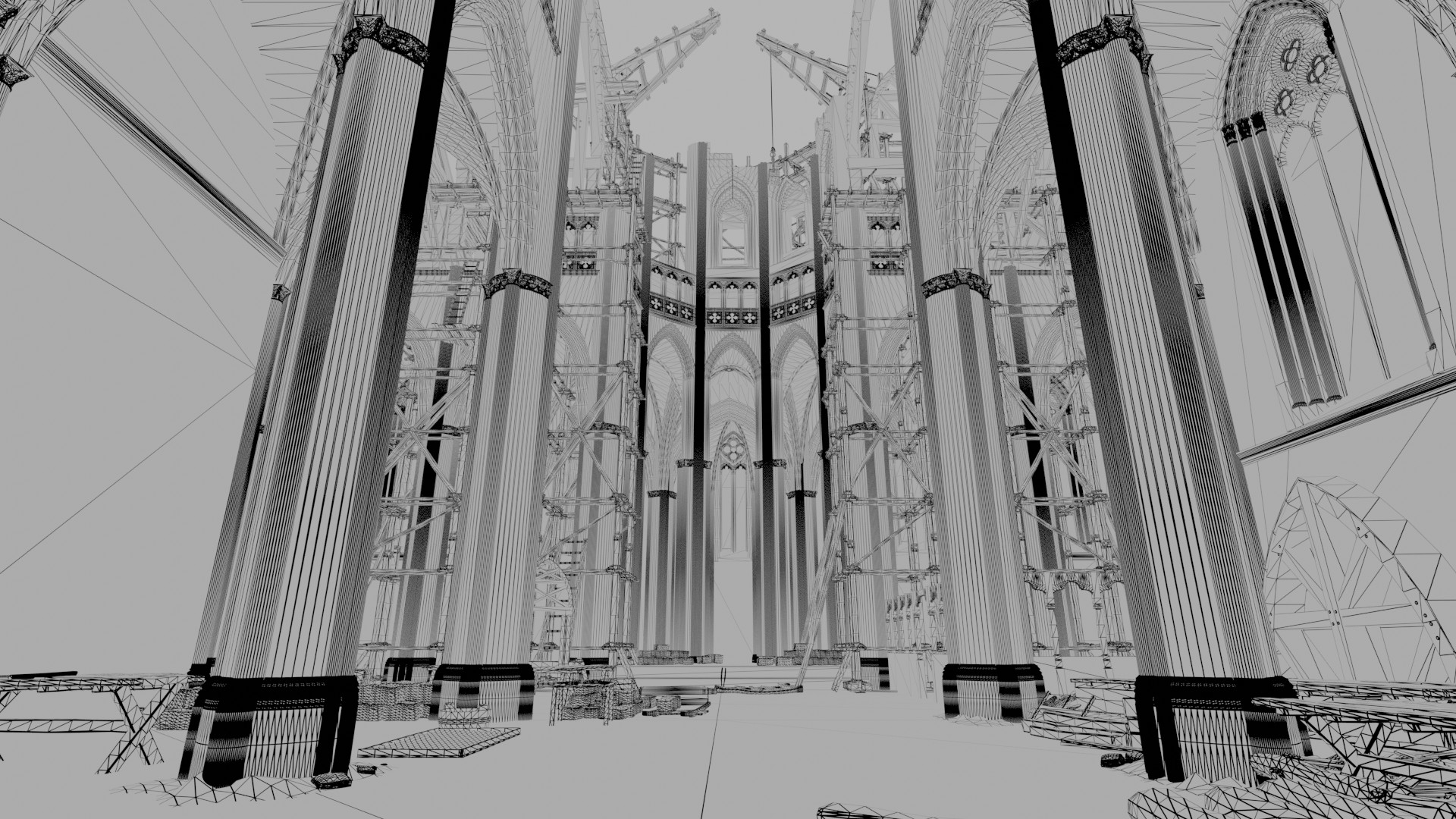The Cathedral of Vitoria-Gasteiz in 360º
during the XII, XIII and XIV Centuries .
The construction of the Cathedral in 360º.
This virtual heritage reconstruction project consists of 3 360º videos showing the Romanesque Church in the 12th century and the subsequent construction of the Cathedral of Santa María in the 13th and 14th centuries. The three audiovisuals are available on the Youtube channel of the Fundación de la Catedral Santa María de Vitoria and can be seen in situ with virtual reality glasses during daily guided tours.
Several stages of construction
What stands out most in this new visit is the possibility of seeing 3 totally different periods from 3 points located inside the central nave of the Cathedral. The first stage shows the Romanesque Church in the mid-12th century, making the viewer aware of the change of space on the current plan. The sobriety is appreciated compared to the current construction and the architectural differences are more than evident. A hundred years later, in the 13th century, is where the next scene takes place, the beginning of the construction of the current Cathedral, this time from a bird's eye view, above the walls of the current central nave. It is in this plan where the distribution of the plant is best appreciated as well as the beginning of the process of raising this structure of more than 12 meters high. Finally, the third scene shows the interior almost completely built and allows us to see details of the way of life and work of the time, already in the 14th century. It is here where the different trades are best observed as well as details such as the use of the Cathedral for worship or the abysmal difference with the first church.
Video 360 como método divulgativo
El vídeo 360º es el soporte óptimo para divulgar este tipo de contenido ya que, sobretodo con las gafas de realidad virtual, cuenta una historia al usuario sin que este lo perciba como un exceso de información. De esta forma los visitantes pueden aprender detalles sobre el proceso constructivo y sus técnicas a la vez que disfrutar de varias vistas de la Catedral durante su construcción sin ser conscientes de muchas de las corrientes de información que fluyen a su alrededor pero que al final retienen: Esto puede ser por ejemplo, la vestimenta, el uso de ciertas herramientas y técnicas constructivas, las proporciones y medidas del lugar y de todos los objetos visibles...
A continuación se muestra una fotografía 360º real comparada con el modelo y con el resultado final, distintas partes del proceso de reconstrucción virtual.
Customized application for Android smartphone and Oculus Go and Oculus Quest 2
This project includes the new application to control from an Android device (Smartphone) the playback of 360º videos in the virtual reality glasses Oculus Go and Oculus Quest 2 by the guides of the in-situ experience.
Guided tour with the virtual reality glasses Oculus Quest 2
A new guided tour is available at the Cathedral. Now a new route will show these videos in the same points of the Cathedral today. The Foundation intends, with this new reconstruction, to disseminate the construction process of the current temple as well as to bring the old Romanesque Church closer to visitors.
The production process
In 3DUBU the production process is based on 4 pillars: Documentation, 3D modeling, texturing and composition.
Documentation is the starting point of all our projects and whether it is external (by archaeologists and historians) or our own (data collection and data capture) is what gives our products the most accurate historical rigor, always leaving a little room for narrative licenses. In this project we have made reference photogrammetry of both the interior and exterior of the Cathedral Santa Maria de Vitoria: This is the development of 3D models from photographs of the place to recreate that are used to create the model manually from an accurate real reference.
The 3D modeling, done with the free software Blender is a step that will mark the level of detail of the product from the first moments, the models are produced with different levels of detail depending on the result that is sought, the time available and its importance within the reconstruction. In this step we model the constructions as well as the props, objects that serve to fill the scene such as tables, tools, stairs...
Once the models are finished, they are "dressed" with materials, mostly from photos taken by the 3DUBU team in similar real spaces that are still preserved or digitally created from these photos or others available from specialized suppliers.
The composition consists of putting together all these layers together with other elements such as the real characters recorded in chroma (green screen), special effects or sound...
The final result is a realistic product that can be visualized in 360º video, virtual reality, augmented reality or, in short, with any audiovisual technology.
Making off
The creation process
Teamwork
This project was funded by the Provincial Council of Alava and coordinated by the Santa María Cathedral Foundation. The historical and archaeological contents were coordinated by José Luis Solaun and Ismael García from the GPAC research group of the UPV-EHU. This was the team in charge of the virtual reconstruction and editing process:

Mario Alaguero Rodríguez
Professor of Audiovisual Communication and Advertising at the University of Burgos.
Samuel Arias Tejedor
Specialist technician in environment, rendering and programming. University of Burgos.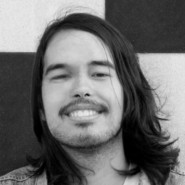
Bruno Rodríguez García
Technician in 3D modeling and animation and video recording and editing. University of Burgos.